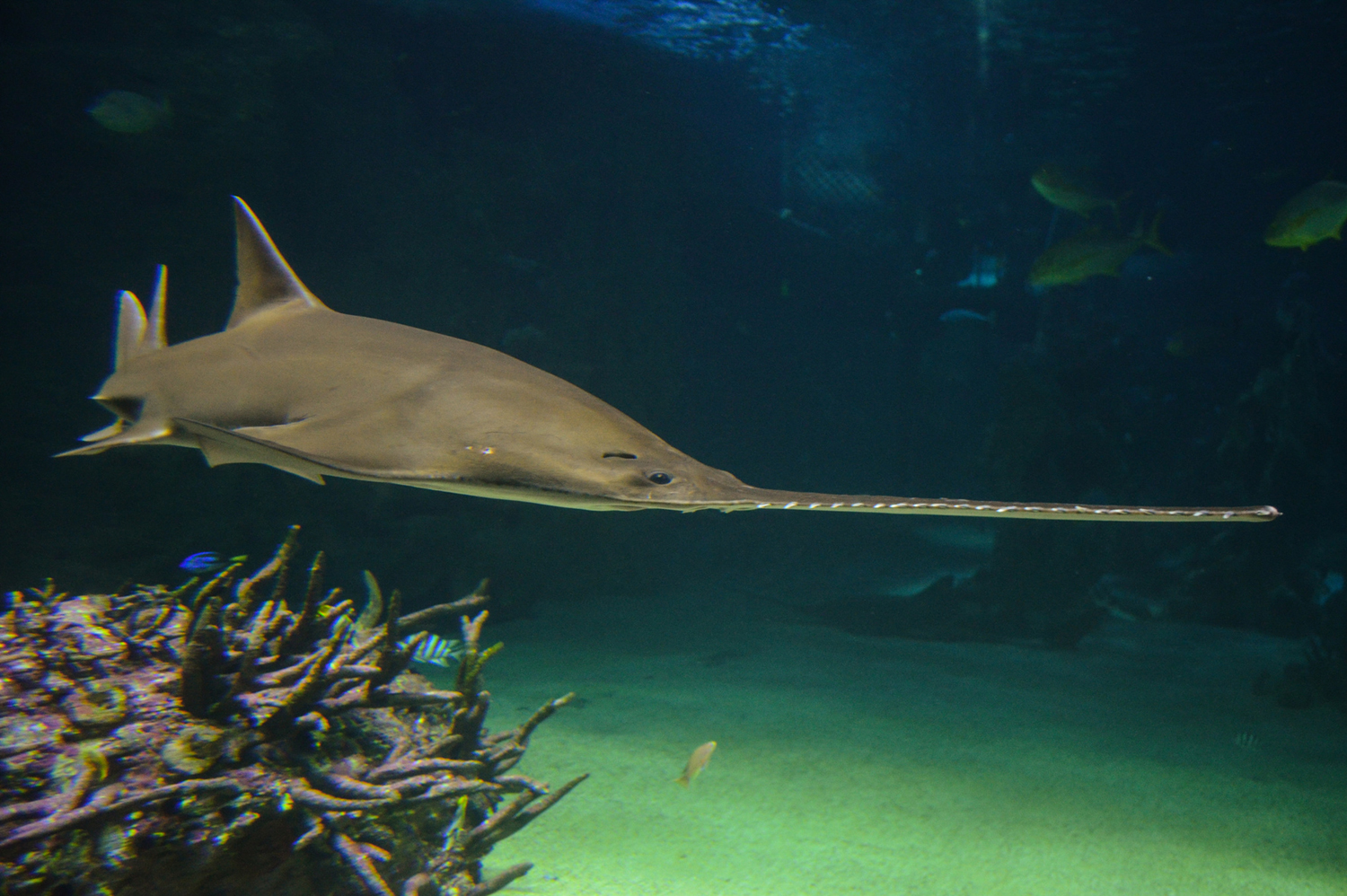Elected representatives in government are in charge of the policy and funding that can make or break saving threatened species. Their decisions and actions matter.
Wide Bay has or used to have 36 threatened animals within its boundaries. One of them is me, the Green Sawfish.
We took care to attach appropriate images that are as close to representative of each species as our resources and the availability of images allowed. However, we could not ensure perfect accuracy in every case. Some images show species that share the same genus but not at the species or subspecies level.
Green Sawfish
Pristis zijsron
Status: Vulnerable
The Environment Protection and Biodiversity Conservation Act 1999 (EPBC Act) lists threatened species under six categories:
Extinct, Extinct in the wild, Critically Endangered, Endangered, Vulnerable, Conservation dependent. Read more about these categories
Pristis zijsron is found across 10 electorates.
Green Sawfish is a species of large ray from the family Pristidae. Green Sawfish have a shark-like body, a flattened head and an elongated snout or rostrum, which is studded with 24–28 pairs of unevenly-spaced rostral teeth. This tooth-studded rostrum is commonly described as the 'saw'. The first dorsal fin origin is slightly behind the pelvic fin origin and the lower lobe of the caudal fin is much shorter than half the length of the upper lobe. Green Sawfish are greenish brown or olive in colour on their upper surfaces and pale to white on their undersides. Mature adult Green Sawfish can grow to 5 m in length in Australian waters.¹
Explore more about this species on the Atlas of Living Australia




Explore more about the threats facing species on our Resources page.
- Acacia attenuata (Acacia attenuata)
- Acacia grandifolia (Acacia grandifolia)
- Scented Acronychia (Acronychia littoralis)
- Emu Mountain Sheoak (Allocasuarina emuina)
- Allocasuarina thalassoscopica (Allocasuarina thalassoscopica)
- Bacon Wood (Archidendron lovelliae)
- Hairy-joint Grass (Arthraxon hispidus)
- Marbled Balogia (Baloghia marmorata)
- Key's Boronia (Boronia keysii)
- Three-leaved Bosistoa (Bosistoa transversa)
- Ooline (Cadellia pentastylis)
- Coopernookia scabridiuscula (Coopernookia scabridiuscula)
- Cossinia (Cossinia australiana)
- Stinking Cryptocarya (Cryptocarya foetida)
- Leafless Tongue-orchid (Cryptostylis hunteriana)
- Wedge-leaf Tuckeroo (Cupaniopsis shirleyana)
- Cycas megacarpa (Cycas megacarpa)
- Daviesia discolor (Daviesia discolor)
- Small-leaved Denhamia (Denhamia parvifolia)
- Bluegrass (Dichanthium setosum)
- Swamp Stringybark (Eucalyptus conglomerata)
- Ball Nut (Floydia praealta)
- Fontainea rostrata (Fontainea rostrata)
- Fontainea venosa (Fontainea venosa)
- Macadamia Nut (Macadamia integrifolia)
- Small-fruited Queensland Nut (Macadamia ternifolia)
- Rough-shelled Bush Nut (Macadamia tetraphylla)
- Macrozamia parcifolia (Macrozamia parcifolia)
- Pineapple Zamia (Macrozamia pauli-guilielmi)
- Lesser Swamp-orchid (Phaius australis)
- Mt Berryman Phebalium (Phebalium distans)
- Nightcap Plectranthus (Plectranthus nitidus)
- Plectranthus omissus (Plectranthus omissus)
- Plectranthus torrenticola (Plectranthus torrenticola)
- Wallum Leek-orchid (Prasophyllum wallum)
- Prostanthera spathulata (Prostanthera spathulata)
- Austral Cornflower (Rhaponticum australe)
- Scrub Turpentine (Rhodamnia rubescens)
- Native Guava (Rhodomyrtus psidioides)
- Romnalda strobilacea (Romnalda strobilacea)
- Quassia (Samadera bidwillii)
- Blotched Sarcochilus (Sarcochilus weinthalii)
- Austral Toadflax (Thesium australe)
- Glossy Spice Bush (Triunia robusta)
- Penda (Xanthostemon oppositifolius)
You are in federal electorate Wide Bay.
